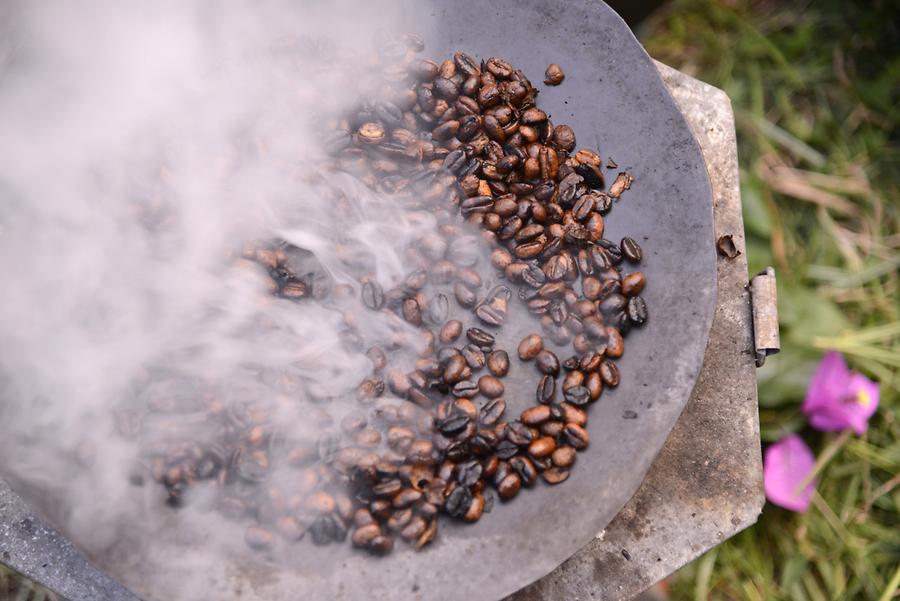Coffee Ceremony#

Coffee Ceremony, December 2012, © Gerhard Huber, under CC BY-NC 4.0 +Edu
A traditional coffee ceremony recalls that South Ethiopia is the country of origin of this drink. From there, the beans got to Yemen in the 14th century, where in the course of time the port city of Mocha obtained a monopoly position. Via Syria and Anatolia the invigorating drink came to Europe, where the first European café opened in Venice in 1645, 40 years prior to Vienna. Initially, the raw kernels were chewed together with butter and thereby developed their stimulating effect - a good cure for hunger and fatigue. Only the dispute of a married couple - according to legend - led to its today's use. The woman threw a bowl of beans after her unfaithful husband, but missed him. The kernels fell into the fire - and coffee roasting was invented. In this, the traditional Ethiopian coffee ceremonyhas its origins, with roasting, crushing, dashing and bringing to the boil three times. It is exclusively in the hands of the women and takes up to 2 hours.
Eine traditionelle Kaffeezeremonie erinnert daran, dass Südäthiopien das Ursprungsland des Getränks ist. Von hier gelangte die Bohne im 14. Jahrhundert in den Jemen, wo im Laufe der Zeit die Hafenstadt Mokka eine Monopolstellung erlangte. Über Syrien und Kleinasien kam das belebende Getränk nach Europa, wo 1645 in Venedig das erste europäische Kaffeehaus eröffnete, noch 40 Jahre vor Wien. Ursprünglich wurden die rohen Kerne zusammen mit Butter gekaut und entfalteten dadurch ihre stimulierende Wirkung – ein gutes Mittel gegen Hunger und Müdigkeit. Erst der Streit eines Ehepaares – so die Legende – führte zur heutigen Nutzung. Dabei warf die Frau eine Schüssel voller Bohnen ihrem untreuen Ehemann hinterher, verfehlte ihn jedoch. Die Kerne fielen ins Feuer – und die Kaffeeröstung war erfunden. Daraus entstand die traditionelle äthiopische Kaffeezeremonie mit Rösten, Zerstoßen, Übergießen und dreimaligem Aufkochen. Sie liegt ausschließlich in den Händen der Frauen und dauert bis zu 2 Stunden.